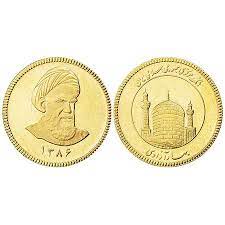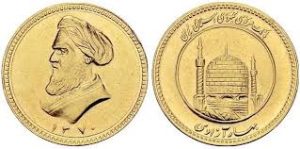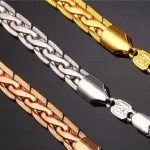Coin history
The history of the first coin dates back to about 5000 years ago in Mohenjo Daro (in present-day Pakistan) and the history of the first coin in Iran dates back to the Achaemenid period 2500 years ago. The coins that have been found from this era are all hand minted. This handiwork causes the astronomical price increase of these coins, which are called antiques. Old coins were minted by hand, so only a few coins could be minted daily. Such coins are called hammer coins. But nowadays they no longer do the steps of minting coins manually. Nowadays, coins are minted by fully automatic machines, hence they are called machine coins. A coin minting machine is capable of minting 12 coins per second. The pressure applied to the molds to strike each coin is equal to 80 tons, which is equivalent to 1000 hammer blows to strike the coin manually. The term minting is used to make gold coins.
It was during the time of Naser al-Din Shah that light gold coins were minted for public consumption for the first time. These coins were called Dozari or Duzari and were minted with a weight of 0.57 grams of gold. Of course, at that time and until the era of Ahmad Shah, gold coins of quarter Toman, five thousand, one Toman, two Toman and five Toman were also common. For example, the one Toman coin was gold with a weight of 2.87 grams.
After the introduction of gold coins during the Pahlavi era, the Ashrafis of the Ahmad Shah era lost their prosperity and these coins were only kept as souvenirs in private collections. During the first Pahlavi era, there were 1 Pahlavi, 2 Pahlavi and 5 Pahlavi gold coins. Government employees used to receive Pahlavi coins as Eid gifts. During the era of Mohammad Reza Pahlavi, gold coins of 500 riyals with a winged lion pattern, 750 riyals of Cyrus' charter, 1000 riyals of Persepolis, 2000 riyals of Shah and Farah, as well as half Pahlavi, one Pahlavi, two Pahlavi and five Pahlavi coins were minted.
After the 1979 Iranian Revolution, at the suggestion of the Ministry of Economic Affairs and Finance and with the approval and order of the Prime Minister of the Provisional Government, on the occasion and commemoration of the first spring of the victory of the 1979 Revolution in Iran, permission was issued to mint different types of gold muskets called "Freedom Spring". Since then, Freedom Spring coins have been minted with two different designs.
From 1980 to 1992
On one side of this coin was the name of Ali bin Abi Talib, repeating "Ali" three times in decorative calligraphy inside a hexagon, and the words "National Bank of Iran" below it, and on the other side, the image of the court of Ali bin Musa al-Reza along with the words "The first spring of freedom" and the date 1980 were engraved. From then until 1992, all kinds of Bahar Azadi coins were produced with the same design; But the word "first" was removed from it.
By comparing the design of Ali bin Musa al-Reza court minted on these coins with the design of this court on the commemorative coins of Mohammad Reza Pahlavi, which were minted to honor the status of Ali bin Musa al-Reza, it is clear that the said design is modeled or even copied from these coins. It was a memorial and only the writing around it has changed.

From 1992 until now
Minting and distribution of Bahar Azadi coins with a new design known as Imami, which was designed by Professor Jafar Najibi, began in 1992 and continues until now, but all the coins that were minted in 2009, 2010, 2011 and after that have the date of minting. The year is 2008. According to the Central Bank, the purpose of this work is to prevent price differences for coins with the new year of minting


Specifications of Bahar Azadi coin
Bahar Azadi gold musket in terms of specifications is in accordance with the gold musket law and the law amending the gold musket multiplication law, the shape of this musket is circular according to the second article of the law of 1959, and its carat rate according to the fourth article of the same law is 900 per thousand gold. pure, and 100 per thousand copper, or an alloy of silver and copper.
| format | total weight (gr) | Weight of pure gold (gr) | circle drop (mm) | Carat per 1000 | Carat in 24 |
| gr | 1.01 | 0.909 | 13.3 | 900 | 21.6 |
| Quarter | 2.03 | 1.830 | 16 | 900 | 21.6 |
| Half | 4.06 | 3.66 | 19 | 900 | 21.6 |
| Full | 8.13 | 7.32 | 22 | 900 | 21.6 |
| Two and a half | 20.33 | 18.30 | 30 | 900 | 21.6 |
| Five | 40.66 | 36.61 | 40 | 900 | 21.6 |



